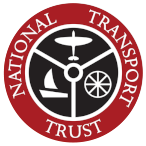
A Roy Chadwick design, a total of 7,377 Lancasters were produced and used during the second war, with over half being lost in action. The Centre's Lancaster, now called "Just Jane" was built by Austin Motors at Longbridge near Birmingham, in April 1945.
Given the serial number NX611, she was one of the first 150 B Mk VII Avro Lancasters destined as part of the RAF's Tiger Force in the Far East. However, Japan's early surrender meant these aircraft were suddenly surplus to requirements and,instead of seeing service, NX611 ended up in storage at Llandow. There she stayed until 1952. From then on, a chequered career followed.
In April 1952 she was bought by the French Government. Painted midnight blue, she flew maritime patrol for the French Naval Air Arm. Ten years later, she went to Noumeau, New Caledonia, was painted white and used for airsea rescue and cartigraphy. Then in 1964, the French presented her to the Historical Aircraft Preservation Society and flew her to her new home in Sydney where she was overhauled before being flown back to Britain.
It took nine days to complete the 12,000 mile journey back to her homeland- seventy flying hours- landing at Biggin Hill on 13 May, 1965. Temporarily grounded, due to expiry of permitted flying hours, it was 1967 before NX611 flew again, but even then, public appearances were brief because of prohibitive costs.
She was flown to Lavenham in Suffolk and, a few years later, in 1972, was put up for auction at 'Squires Gate', Blackpool.
Meanwhile, in Lincolnshire, determined to commemorate their brother's death whilst taking part in the Nuremburg Raid, as well as the deaths of all those serving in Bomber Command , Fred and Harold Panton had decided to purchase a Second World War Bomber. At one time, they had had their eyes on a Halifax which was coming up for sale, but their father told them, in no uncertain terms, they would not be permitted to keep one at his farm.
The years passed, but the brothers still held on to their dream. Eventually, Fred and Harold became co-owners of their own farm. When some land came up for sale that included part of the defunct East Kirkby airfield they bought it. Some areas of concrete and a few buildings still stood on the old airfield, in a state of disrepair. They used part of the area to set up a chicken farm. However, with the idea of owning an exhibition aircraft still foremost in their in their minds, they also began to renovate the "working area" of the airfield. That included building a new hangar, an exact replica of a T2 hangar that had stood there during the war years.
Learning about the forthcoming auction, via an advertisement, Fred and Harold decided to try and purchase the old Lancaster. This aircraft could be the perfect monument to their brother's memory. When Fred saw NX611 for the very first time at Blackpool, she stood lonely and forlorn, waiting to be auctioned off to the highest bidder. Around her, a great crowd stood - some hopefully putting in bids, but most just watched - curious to see one of the country's finest types of Bomber at close range. Sadly, due to the reserve not being reached, she was withdrawn from the auction and later privately sold to the Rt Hon Lord Lilford.
Fred and Harold kept in contact with her new owner and eventually, whilst she stood Gate Gaurdian at RAF Scampton, near Lincoln, and after one or two hiccups in the furtherance of their ambition to own her, a deal was struck with Lord Lilford's agent.
In September 1983, NX611 was finally purchased by Fred and Harold and, four years later, after completeing an agreed total of ten years gate gaurdian at RAF Scampton, she was brought to East Kirkby, courtesy of the RAF. It was sixteen years since Fred had seen her at Blackpool auction.
The first moves towards restoring one of her four engines were made in 1993. Two ex RAF engineers were brought in to do the job. They began work on No3 engine. Although it had been idle for 22 years, they were confident they could bring it back to life. Accessing the spare parts was organised, the engine rotated to ensure it would still turn and the cam shaft covers removed. Both had to be replaced, although the engine cylinders were in good working order. Then the propellor was removed, stripped down and examined and- apart from having tom adjust the blade settings- everything proved to be in fine order and ws rebuilt.
Local contractors were brought in to check the wiring and make good where necessary. That alone was a ten-day job. The engines starter motor, magnetos, fuel booster pump and ignition harness were removed and checked, the fuel tank was pressurised and the fuel jettison system reset. When the throttle controls between the cockpit lever and the engine were uncovered, it was discovered that almost a third of the small control rods had to be replaced. However after about seven hundred man hours and at a cost of £7000 the engine was finally ready. The work completed on all four engines, they are now at a fully operational taxiing standard.
Specification:
Engines: Four Rolls Royce Merlin 24 engines (1640 hp)
Dimensions:
Span 102 ft
Length 69 ft, 11 3/4 in
Height 20 ft 6 in
Wing area 1300 sq ft
Weights:
Tare 37,330 lbs
Max all up: 72,000 lbs
Max landing: 60,000 lbs
Max bomb load: 18,000 lbs
Max specialist bomb load: 22,000 lbs (Grand Slam)
Performance:
Max Speed: 275mph at 15,000ft
Cruising Speed: 200mph at 15,000 ft
Service ceiling: 25,000 ft
Range: 2,350 miles with 7,000 lbs bomb load
Courtesy of The Lincolnshire Aviation Heritage Centre, East Kirkby Airfield, East Kirkby, Nr Spilsby, Lincolnshire, PE23 4DE. Ring 01790 763207 or This email address is being protected from spambots. You need JavaScript enabled to view it..
